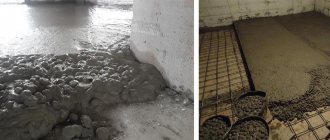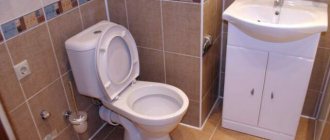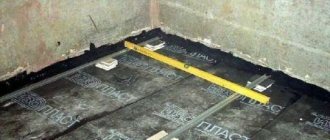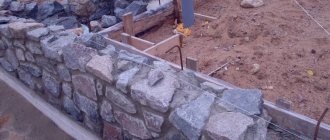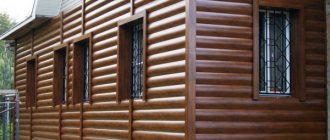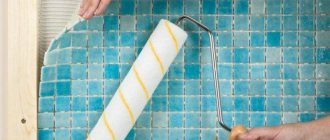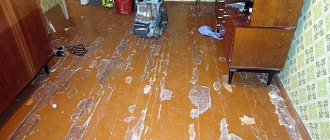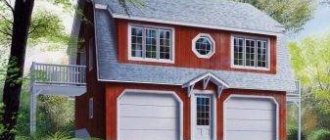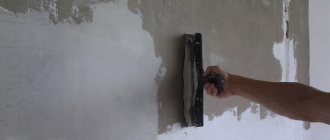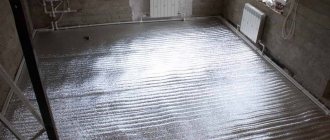In addition to insulating the walls in a built house, you should also take care of the thermal insulation of the floors. Moisture and cold come from the ground, so high-quality and competent insulation of the floor in the house remains a very pressing issue.
The article will provide a list of popular thermal insulation materials and provide advice for insulating the ground, as well as concrete and wooden floors.
Popular thermal insulation materials for floors
Today there are a great variety of insulating materials on the market for both walls and floors. Insulation materials are divided into natural and artificial.
Natural materials include: flax, cellulose, granulated sawdust, cork.
The rest of the insulation is considered artificial. According to the form of application, insulation materials are divided into the following types:
- bulk - expanded clay, sawdust and slag in granules;
- liquid;
- sprayed - polyurethane, penoizol;
- rolled - cork, mineral wool, flax, linoleum;
- tiled - mineral wool, polystyrene foam, linen mats, etc.
Insulation technology varies greatly depending on the form of insulation. For bulk and tiled forms of insulation, it is necessary to construct a structure from logs or a screed. Rolled materials serve as a backing for laminate, linoleum or parquet. In some cases, linoleum can also act as insulation.
The least amount of space is required for cork, sprayed polyurethane, as well as bulk polyurethane compositions. Expanded clay, as a rule, is spilled between the joists in wooden floors; the thickness of the insulating layer is about 10 cm.
In private houses, the option of insulation over the ground, as well as wooden floors, is more often used; for apartment buildings, insulation over concrete is typical. Accordingly, insulation materials of a smaller thickness are selected for an apartment than for a private house.
Before deciding to use one type of insulation or another, you should find out the height of the ceilings in your home and decide to what height the floor level can be raised.
You should not lose sight of the fact that the doors to your home may begin to rattle along the raised floor, or may stop opening and closing altogether.
Further, some types of heat insulators do not tolerate moisture, for example, flax, cellulose, and rot when exposed to it for a long time.
Peculiarities
Wooden floors, unlike concrete, are much warmer. Wood is a capricious material and when building a house it is not always possible to achieve the desired effect. The ratio of thickness and thermal conductivity is often disproportionate, so insulating floors in a wood house is simply necessary.
The possibility of floor insulation exists not only in new houses, but also in those built a long time ago.
Floor insulation helps maintain an ideal indoor microclimate and serves as a guarantee against such unwanted problems:
- dampness;
- the appearance and proliferation of mold;
- the appearance of microorganisms and fungi that adversely affect the health of those living in the house;
- high consumption of thermal energy to heat the house;
- damage and destruction of the building.
You can carry out floor insulation work yourself. This will significantly reduce the budget. Construction stores offer a wide range of materials that can be worked with even without specific skills.
Insulation of structures involves different types of work:
- insulation of floors above the ground floor;
- insulation of interfloor ceilings;
- insulation of the floor between the living space and the attic.
In each case, materials are used not only to maintain optimal temperature conditions, but also for sound insulation. A well-insulated first floor is a guarantee that the house will become comfortable for living.
This is interesting: Mineral wool for floor insulation
Floor insulation on the ground
A characteristic feature of this type of insulation is the contact of joists, floors and thermal insulation with the soil, and sometimes with groundwater. This nuance imposes certain requirements on the heat-insulating material - it must be water-repellent, not subject to rot, and for additional protection it must be covered with a hydro- and vapor barrier.
In order to level the floor and prepare the layer for the flooring, it is recommended to sprinkle the soil with sand, crushed stone or slag and compact the backfill. Logs are laid on top of the bedding, between which the insulation is placed.
You can go another way - lay sheets of foam plastic or mineral wool mats on top of the bedding, cover them with roofing felt and make a cement screed on top.
General requirements
What characteristics should a modern safe and high-quality insulation have?
- Lightness . The insulation should not weigh down the building structure.
- Durability and reliability . Properly chosen material will definitely become a reliable support for the entire house.
- Safety . Mandatory requirement. It is important that the selected material fully complies with all sanitary standards and is non-toxic.
- Easy to install . Installing insulation should not be difficult.
- Low level of thermal conductivity . This is the main characteristic of the material, since its main functional purpose is to retain heat in the house.
- Density _ The higher the density of the material, the better it will protect your home from winter cold.
In the video - insulation for the floor in a wooden house:
Insulation of concrete floors
To insulate a concrete floor using polystyrene foam or mineral wool, logs are placed on top of it, between which the insulation is located, and laminate, linoleum or parquet is laid on them.
Often a dry screed made of expanded clay and gypsum fiber board is placed on top of the insulated floor. Its total thickness is up to 7 cm, 5 cm for expanded clay, and 2 cm for a gypsum fiber board.
To save space in height, heated floors are installed in the screed, first laying a layer of isolon. You can also lay fiberboard sheets on top of the concrete, provided the screed is relatively even, and lay laminate, parquet or linoleum on top of them, the only thing that is not recommended is laying tiles on top of them.
Manufacturers
Many companies are engaged in the production of materials for floor insulation. Among them are world-famous brands and those who are just starting their journey. Most of the companies have almost a century of history. To help you make your choice, below is a rating of the most popular manufacturers. All of them present materials with proven quality.
- Knauf. The international manufacturer has over 90 years of experience. Insulation materials are popular all over the world. The products are made from natural raw materials using the latest technologies. All insulation materials are environmentally friendly and harmless. Knauf has been a leader in the market for many years.
- Rockwool. The company works using modern technologies and specializes in basalt thermal insulation materials. The advantage of this raw material is its high performance and affordable price. In Russia, branches are located in the Moscow, Chelyabinsk and Leningrad regions. The company is in second place in the ranking of manufacturers of insulation materials.
- Paroc. The company also specializes mainly in the production of mineral wool. Time-tested quality. The manufacturer focuses on saving thermal energy for heating living spaces and excellent sound insulation. But the disadvantage of this company is that all insulation products have a fairly high price. That is why the company ranks third.
- Isover. The manufacturer focuses on the production of mineral wool and offers two solutions - glass wool and stone wool. This is a distinctive feature of the manufacturer, since both options are often used in construction. The materials have high elasticity and strength. According to their characteristics, mineral wools of this brand are the best. There is a good price-quality ratio here.
- Ursa. The company works using new technologies and offers both mineral wool and fiberglass. Product prices are affordable. The company recently entered the Russian market, so it is not yet very widespread. But, thanks to prices that are significantly lower than the prices of other market representatives, there is a demand for the products.
Foamed polyethylene on a foil base
Foamed polyethylene is considered one of the best insulation materials for floors. It is produced by foaming polyethylene with liquefied gas. Foil is applied to one side of the composition to reflect heat.
The finished product is packaged in rolls, slabs or sheets.
- The sheet is not afraid of moisture and can be used in rooms with high humidity.
- Can be installed in kitchens and bathrooms and even in baths.
- Retains its original appearance even under high loads. Not afraid of contact with gasoline and various alkalis.
- Installation of foamed polyethylene is quite simple; the sheets are not massive in size.
- The sheet must be laid with the foil side facing up.
Thus, the heat will not only be retained, but also reflected back into the room.
Foam plastic as a budget and reliable insulation
It is no secret that polystyrene foam is extremely popular during the construction of absolutely any structure. It is lightweight, affordable and very durable. But many people consciously refuse to use it for insulation work, doubting its safety for human health. Many years of scientific research have proven that no toxic substances are released during the direct use of the material as the main insulation, so if you are considering polystyrene foam as one of the options, then take a closer look at it. It will provide excellent protection for the concrete floor of the first floor, but in no case is it recommended to use it for insulating logs, because due to the lack of gaps, moisture will accumulate under the sheets of material, as a result of which the likelihood of fungal formations will increase.
Of course, the insulation layer must be placed on the outer sides of the enclosed elements. Thus, for the floor of the first floor it is from below. It is not recommended to use foam plastic in any other insulation work, because it will not be able to maintain the temperature level at the proper level.
Foam insulation of the subfloor
Polystyrene foam is a budget-friendly and very popular building material, especially in the field of private housing construction. The most suitable thickness of insulation for the floor is 200-300 mm. » data-lazy-type=»iframe» src=»data:image/gif;base64,R0lGODlhAQABAIAAAAAAAP///yH5BAEAAAAALAAAAAABAAEAAAIBRAA7″>
Laying ecowool (video)
We insulate the floor with isolon
New generation insulation. It is made from foamed polyethylene foam. Izolon is designed to meet new requirements for floor thermal insulation. Has a number of advantages:
- small thickness - 2.1-10.0 cm. It is noteworthy that the level of thermal conductivity does not increase;
- goes well with any material. Ideal for any gender;
- does not absorb moisture;
- does not rot, protects against the negative effects of moisture and steam;
- long service life;
- environmentally friendly material;
- suitable for any room;
- small thickness. This saves space significantly.
Izolon is designed to meet new requirements for floor thermal insulation
We insulate the floor with polyurethane foam
This insulation (hard and soft) can be obtained from isocyanate and polyol components.
Polyurethane foam has a cellular structure (bubbles filled with gas and air), provides low thermal conductivity, and is lightweight. For a number of properties, it is considered one of the best materials for thermal insulation.
The insulation must be applied to the surface by spraying. You will have to use special equipment. Polyurethane foam adheres perfectly to any material. A vapor barrier layer is not needed.
The use of such modern material as polyurethane foam will help create an excellent thermal insulation coating with excellent technical characteristics
Instructions for carrying out thermal insulation work in different situations
The floor design of a wooden house can have a wide variety of appearances. Consequently, the procedure for carrying out thermal insulation work will also differ. We present to your attention instructions for insulation in the most common cases.
Insulation with low underground
Due to the limited height of the subfloor, the insulation cannot be fixed from below to the joists. This leads to the need to dismantle the existing flooring, which makes this method the most labor-intensive.
In general, the work is performed in the following sequence.
- First step. Remove baseboards and flooring elements. If replacing the decking is not in your plans, work as carefully as possible. For greater convenience, sign the boards to avoid problems during their reassembly.
- Second step. Examine the condition of the lag. Dismantle rotten and deformed areas.
In place of the removed elements, install pieces of timber of similar sizes. To fasten parts of the structure, use wooden boards and galvanized screws.
- Third step. Attach a support block to the bottom of each joist.
- Fourth step. Prepare lumber for arranging the rough flooring. An unedged board works well. Saw it into pieces 10-20 mm long less than the installation pitch of the joists - the flooring elements should be laid quite freely.
- Fifth step. Assemble the subfloor. There is no need to attach the boards to the support beams.
- Sixth step. Cover the flooring and joists with a vapor barrier material. If the building is located in an area with high groundwater, instead of vapor barrier, install waterproofing - glassine or roofing felt. Lay the insulation with a 10-15 cm overlap on the walls. Tape the joints of individual strips of material with tape.
- Seventh step. Install finished floor joists. Lay the selected thermal insulation material.
- Eighth step. Cover the insulation with a second layer of vapor or waterproofing.
- Ninth step. Stuff counter battens to create a ventilation gap between the insulation “pie” and the finishing flooring. The recommended gap thickness is 20 mm.
- Tenth step. Reinstall the previously removed floorboards or install new flooring.
| Floor board thickness, mm | Distance between lags, cm |
| 20 | 30 |
| 24 | 40 |
| 30 | 50 |
| 35 | 60 |
| 40 | 70 |
| 45 | 80 |
| 50 | 100 |
43 44
